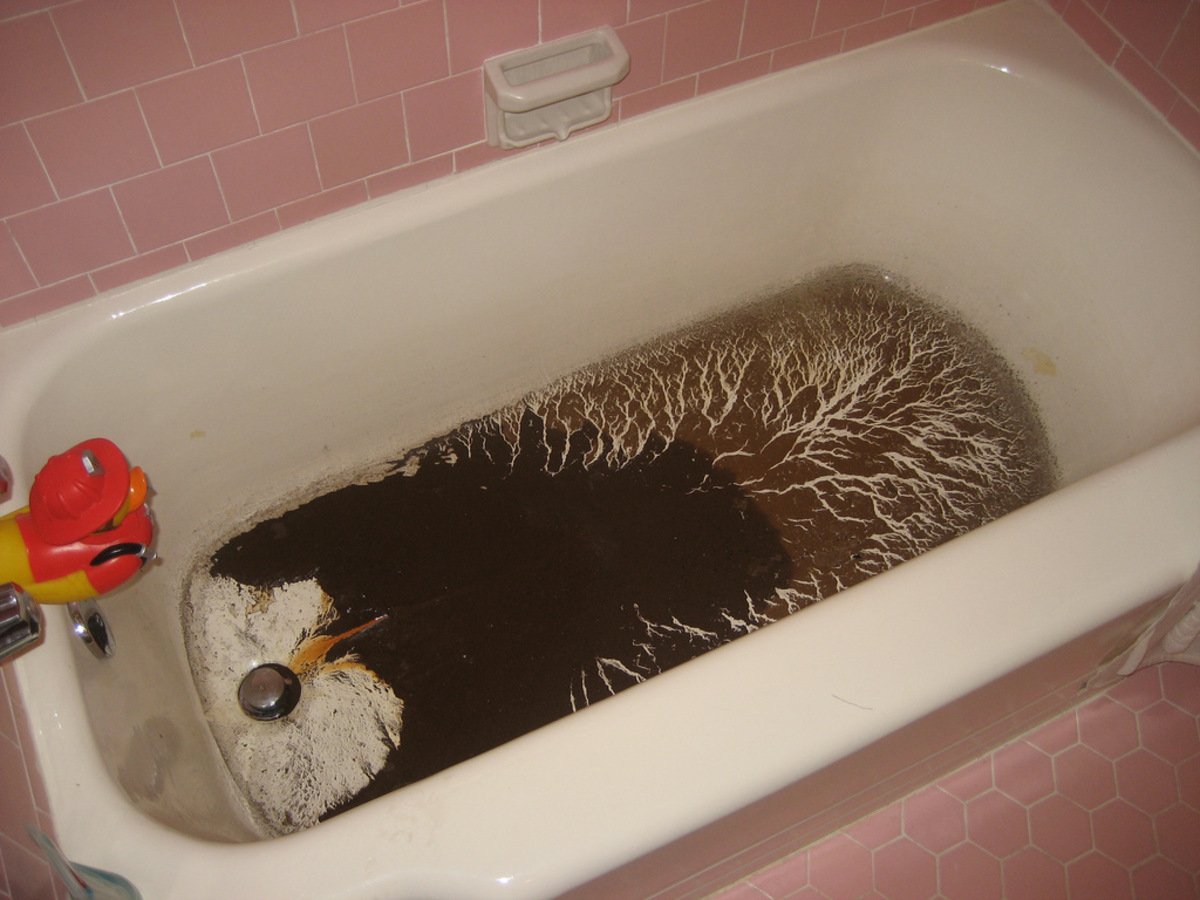Top Reasons for Effluent Coming Up in the Bathtub
Top Reasons for Effluent Coming Up in the Bathtub
Blog Article
What are your thoughts about What To Do If Sewage Starts Backing Up Into the Shower?

Sewage back-up in the bath tub can be a distressing and unhygienic issue for any type of homeowner. Not only is it inconvenient, yet it additionally poses significant wellness dangers and shows underlying issues with the plumbing system. Recognizing why sewage is showing up through the tub is essential for taking proper activity to resolve the problem efficiently.
Introduction to the Problem
Recognizing the Trouble
When sewer starts backing up into the tub, it's a clear indicator of a trouble with the water drainage system. The wastewater that needs to be moving far from your home is rather locating its back right into your space, which can bring about substantial damages and carcinogen.
Prospective Causes
Several aspects can contribute to sewage backup in the bath tub. From obstructions in the drain line to issues with the plumbing infrastructure, recognizing the root cause is important for finding an option.
Typical Factors for Sewage Backup
Clogs in the Drain Line
Among the most common root causes of sewer back-up is a clog in the sewage system line. This can occur because of the build-up of particles, oil, or international things in the pipelines, protecting against proper flow and triggering sewer to support into your tub.
Tree Root Breach
Tree roots seeking dampness and nutrients can penetrate drain lines via little cracks or joints. Gradually, these origins can grow and broaden, triggering considerable damage to the pipes and resulting in sewage backup problems.
Aging Facilities
Older homes might have outdated plumbing systems that are extra vulnerable to rust, cracks, and damage. As pipes age, they come to be extra vulnerable to leakages and blockages, raising the chance of sewer backup cases.
Heavy Rainfall or Flooding
Throughout periods of heavy rainfall or flooding, the sewer system may come to be overloaded with excess water, creating back-ups and overflows. This can result in sewer supporting right into tubs and various other fixtures inside the home.
Health And Wellness Risks Associated with Sewage Backup
Contamination of Water
Sewer back-up can pollute the water in your house, posing a significant health and wellness risk to you and your family. Exposure to contaminated water can result in stomach issues, skin infections, and various other illnesses.
Spread of Condition
Sewage contains harmful germs, infections, and parasites that can create a range of illness, consisting of liver disease, cholera, and gastroenteritis. Entering contact with sewer or polluted surface areas places you in jeopardy of infection.
Mold Development
Dampness from sewage back-up can develop excellent problems for mold and mildew growth in your home. Mold spores can intensify respiratory troubles and trigger allergies in sensitive people, making prompt clean-up essential.
Signs of Sewage Back-up
Foul Odors
Unpleasant smells rising from drains or components, especially in the washroom, may suggest sewage backup concerns. These smells are frequently solid and consistent, indicating an issue that calls for instant focus.
Slow Draining Fixtures
Bathtubs, sinks, and bathrooms that drain gradually or not in all could be experiencing sewage backup. If multiple fixtures are affected simultaneously, it's likely that the issue originates from an usual point, such as the major sewage system line.
Gurgling Noises
Unusual gurgling or bubbling sounds originating from drains pipes when water is running in other places in the house are indicative of air trapped in the plumbing system. This air accumulation can result from sewage backup and should be examined immediately.
Immediate Actions to Take
Shutting Off Water
In case of sewage back-up, it's necessary to turn off the water supply to stop more contamination and damages. Locate the major water shutoff valve in your house and closed it off till the problem can be fixed.
Speaking To an Expert Plumber
Dealing with sewer backup is not a DIY task. Call a licensed plumber with experience in managing sewage-related issues to analyze the situation and do necessary repair work or cleanups.
Avoiding Contact with Infected Water
Till the sewer backup is resolved, prevent contact with polluted water to stop the spread of microorganisms and pathogens. Wear protective gear if you need to remain in the damaged location and clean your hands extensively later.
Safety nets
Regular Maintenance of Sewer Lines
Schedule regular inspections and maintenance of your sewage system lines to recognize and resolve prospective problems before they escalate into major problems. This can consist of clearing out debris, checking for tree root breach, and fixing any damaged pipelines.
Installing Backwater Valves
Take into consideration installing bayou shutoffs in your plumbing system to prevent sewage from flowing back into your home during durations of heavy rainfall or flooding. These valves instantly close when water starts backing up, safeguarding your residential property from contamination.
Proper Disposal of Family Waste
Stay clear of flushing anything aside from toilet paper and human waste down the bathroom to avoid obstructions and clogs in the sewer line. Dispose of grease, oil, and other family chemicals effectively to minimize the risk of plumbing problems.
Cleaning Up After Sewage Backup
Disinfection Procedures
Completely sanitize and sanitize affected areas after sewage back-up to remove unsafe microorganisms and stop mold and mildew development. Use ideal cleansing products and safety gear to ensure risk-free and effective cleaning.
Repair of Impacted Areas
Fix any damages to flooring, wall surfaces, or components brought on by sewage back-up. Relying on the degree of the damages, you may require to replace carpets, drywall, or other materials to recover your home to its pre-loss condition.
Why Is Water Backing Up in My Bathtub When I Flush My Toilet?
What to do about a sewer line clog
First, don’t bother with plunging. No amount of plunging will dislodge the clog in a sewer line. The clog is too far away. Plungers are for clogs in the toilet itself, not the sewer line. Plus, the most likely causes of a sewer clog are:
Tree roots Flushed toys or feminine products Grease buildup Those items don’t move easily. And in the case of tree roots, the roots need to be cut out of the pipe and the pipe will need to be repaired.
You’ll need a closet auger. A closet auger is a type of plumber’s snake with a protective cover to keep from scratching the delicate porcelain toilet. If the clog is further down, you may need to remove the toilet or use one of your cleanouts to get to the clog.
We also recommend doing a video inspection of the drain to ensure that the cause of the clog has been completely removed. Otherwise, you could have the same problem again in a few days or weeks.
https://mspplumbingheatingair.com/blog/why-is-water-backing-up-in-my-bathtub-when-i-flush-my-toilet

As a fervent reader about Why is Sewage Backing Up Into My Bathtub?, I figured sharing that piece of content was really useful. I beg you set aside a second to promote this entry if you appreciated it. Thank you for taking the time to read it.
This Website
Report this page